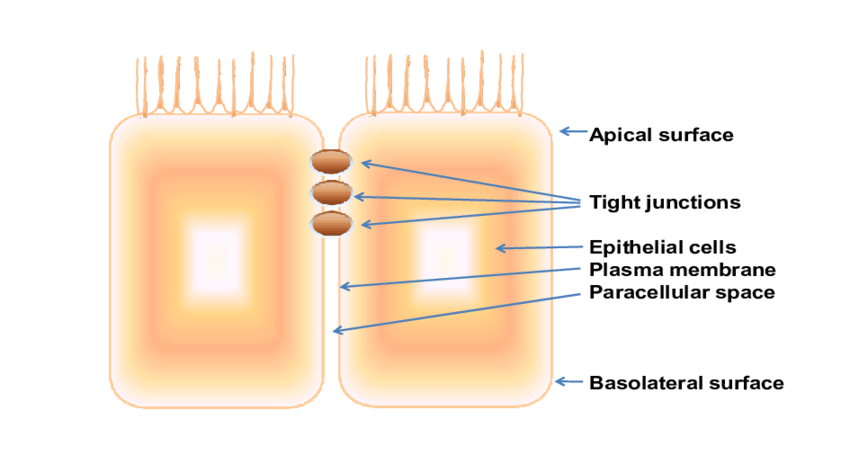Tight junctions are seen on the lateral surfaces of epithelial cells in vertebrates, specifically higher animals. These junctions help reduce or prevent the flow of smaller molecules between adjacent cells. Such junctions in invertebrates are called septate junctions.
Function of Tight Junction
- Tight junctions act as permeability barriers.
- They are located just below the apical border or microvillar surface of epithelial cells.
- Nutrients absorbed from the intestine through one side of epithelial cells are released into the bloodstream from the other side through tight junctions.
- The tight junctions prevent the diffusion of small molecules into the bloodstream from the intestinal lumen.
- In pancreatic acinar tissue, tight junctions prevent the leakage of proteins and enzymes from the pancreas.
Structure of Tight Junctions

- Tight junctions are made of thin bands encircling the cells.
- These thin bands of adjacent cells are in contact with each other.
- Such tight junctions of two adjacent cells appear fused at certain points in a series.
- The 3D structure reveals that a tight junction is a network of ridges on the cytoplasmic portion of the membrane and complementary grooves on the other portion.
- These ridges are made of two rows of proteins.
- Lines of these proteins seal the junctions and are thus called sealing strands.
- Sealing strands interconnected in series like stitches.
References
- Agarwal, P. V. |. V. (2004). Cell biology, Genetics, Molecular Biology, Evolution, and Ecology: Evolution and Ecology. S. Chand Publishing.
- Niessen, C. M. (2007). Tight Junctions/Adherens Junctions: Basic Structure and Function. Journal of Investigative Dermatology, 127(11), 2525-2532. https://doi.org/10.1038/sj.jid.5700865
- Nagy-Szakal, Dorottya & Gyorffy, Hajnalka & Molnár, Kriszta & Müller, Katalin E & Papp, Maria & Arató, András & Veres, Gabor. (2012). Mucosal expression of claudins in children with celiac disease. 10.5772/50175.




